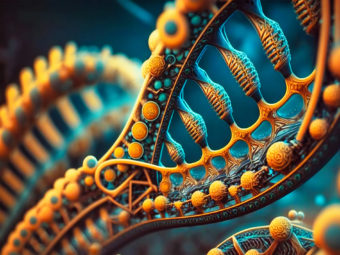Your lab depends on healthy growing cells, and these cells depend on the continuous operation of your incubation shakers. The last thing you want in your lab is unscheduled downtime.
Servicing your incubation shaker is important to maintain accuracy, prevent contamination, optimize productivity and extend lifespan, especially if you use it in a laboratory for research or production settings where precision, reliability and consistency are crucial.
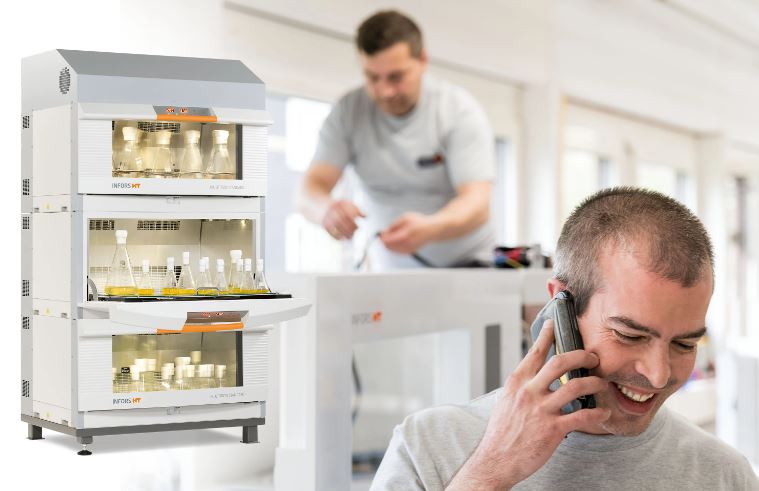
Even though our INFORS HT shakers are made for years of constant operation, some preventive maintenance will ensure optimal production efficiency and accuracy.
Here are 10 tips you can follow to help ensure optimal performance in your shakers:
Tip #1: Keep It Clean
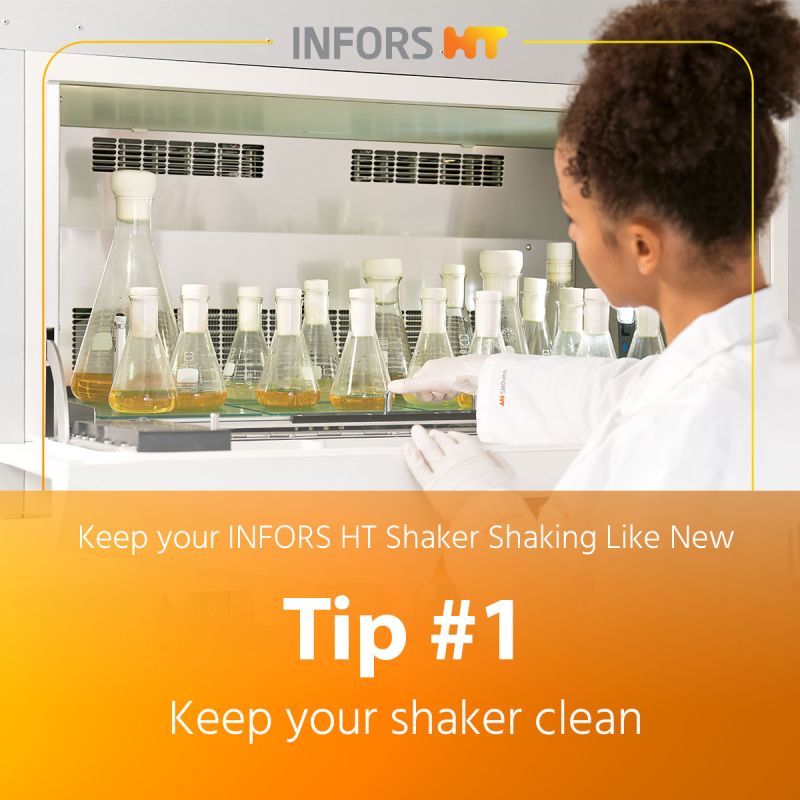
Keeping your incubation shaker clean is crucial to prevent contamination. Especially with eukaryotic cell applications, any dust, debris or biological residues left on the shaker can potentially introduce contaminants into your experiments or production, compromising the accuracy and validity of results.
In multi-user or multi-sample environments, cross-contamination is a significant concern that can be minimized by cleaning the shaker thoroughly between uses.
Wipe down surfaces with warm soapy water (regular dish soap recommended) and rinse; lift the shaker table to remove any debris and clean.
Tip #2: Sanitize
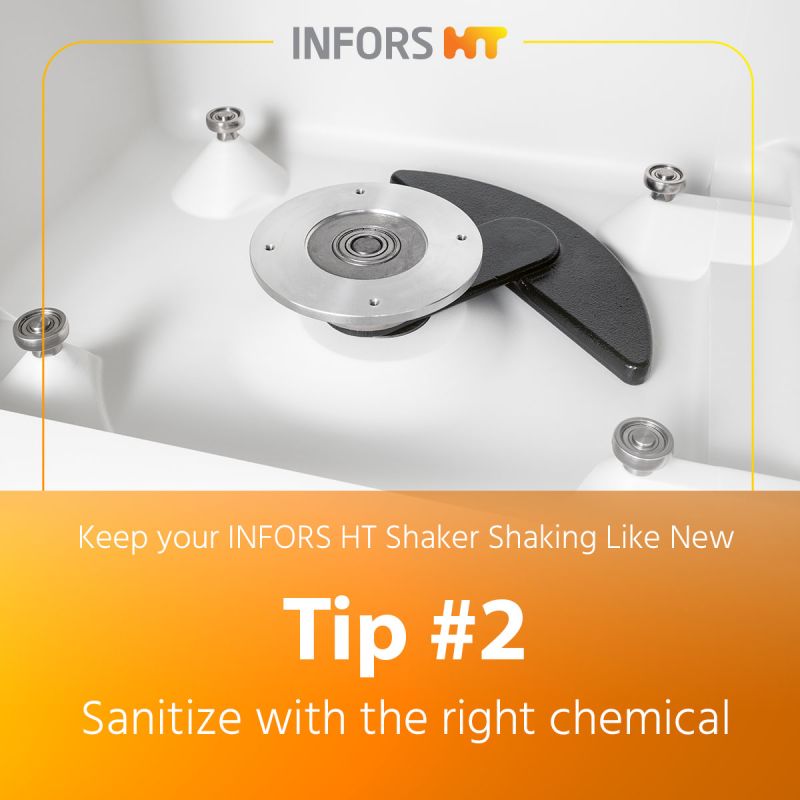
Wiping down and cleaning your shaker surfaces is important, however, you should sanitize it on a regular basis as well. Sanitization is important for contamination prevention and minimizing cross-contamination, but it also helps maintain quality and data integrity, ensure safety and prevent odors and residue.
To effectively sanitize your incubation shaker, you should use appropriate disinfectants and sterilization methods. Bleach is forbidden, but 70% EtOH or quaternary ammonium cleaners are acceptable. Be sure to sanitize all relevant parts and surfaces, including the interior and exterior of the shaker, clamps, trays and any accessories.
Tip #3: Humidify with the Right Water

Humidity control is often part of creating optimal growth conditions for various organisms. It helps ensure that experimental conditions closely mimic the natural or desired environment, improving the accuracy of research outcomes. In experiments that involve long incubation periods and/or small sample sizes, low humidity levels can lead to significant evaporation losses, which can compromise the results and operations.
To ensure proper humidification of your incubation shaker, INFORS HT offers the HHC humidification, featuring bidirectional humidity control. This is the most precise and advanced solution available in the market, as it can both increase and decrease the humidity levels inside the incubation shaker.
Use the proper water for humidification. The recommended water for optimal care is reverse osmosis water with a conductivity of approx. 5 µS/cm. Leave the algicide out. Do not add anything to humidification water — it can damage the humidity system or have negative side effects on your cultures. Ultrapure water (WFI Water For Injection) is very aggressive and can cause corrosion. Never use tap water because it will invariably cause lime scale.
Tip #4: Cool it

Many biological experiments and processes require precise temperature control to ensure the growth and development of cultures, enzymes, or chemical and biological reactions. Cooling helps maintain the desired temperature range, ensuring the accuracy and success of these processes.
It is important to understand that every incubation shaker generates some excess heat and for this reason, the lowest stable temperature setpoint without cooling is always several degrees above the ambient temperature at the equipment. A cooling system enables you to perform cultivations with a stable control at the desired temperature.
To ensure performance and a long lifetime of the cooling, keep the condenser free of dust and ensure that the coolant is checked annually to ensure the proper level is maintained (fill to 12.5 mm or ½ an inch from the top of the reservoir). Furthermore, make sure that the ventilation gaps around the shaker housing are wide enough and kept free of obstacles.
Tip #5: CO2 Pressure

Many bioprocesses, such as the ones where eucaryotic cell and tissue cultures are involved, require a controlled environment with precise CO2 levels. Eucaryotic cells are sensitive to changes in CO2 concentration, and maintaining the correct levels is essential for their growth, viability, and success of experiments. Monitoring and controlling CO2 levels help maintain the optimal pH range required for cell growth and metabolic processes.
Check CO2 gas pressure to ensure proper operation. It should be set between 0.5 and 0.7 bar or 7 and 10 PSI. This may vary if multiple units are connected to the same source.
Tip #6: Keep the Sticky Stuff Clean
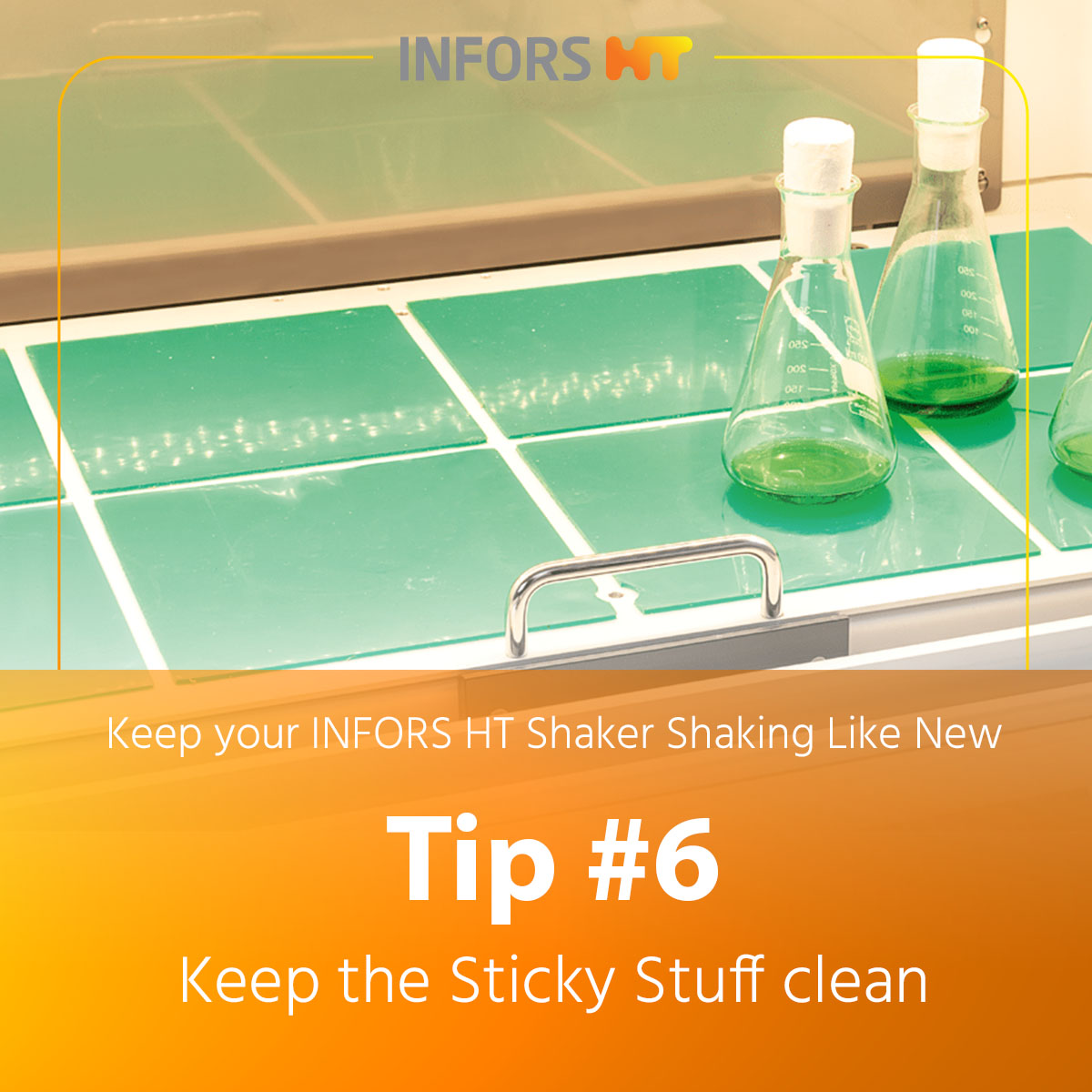
The sticky stuff is an ideal solution to secure flasks in your incubation shaker. It is important to keep it clean from dust, debris such as paper towels and aluminum foil as well as biological residues over time. Cleaning your sticky stuff properly will allow optimal support for your flasks and extend the stickiness and life span.
To rejuvenate the grip, wash it with warm soapy water, rinse and let the adhesive air dry. Make sure that all flasks are clean and dry before placing them on the adhesive surface.
Tip #7: Approved Clamps and Fixtures
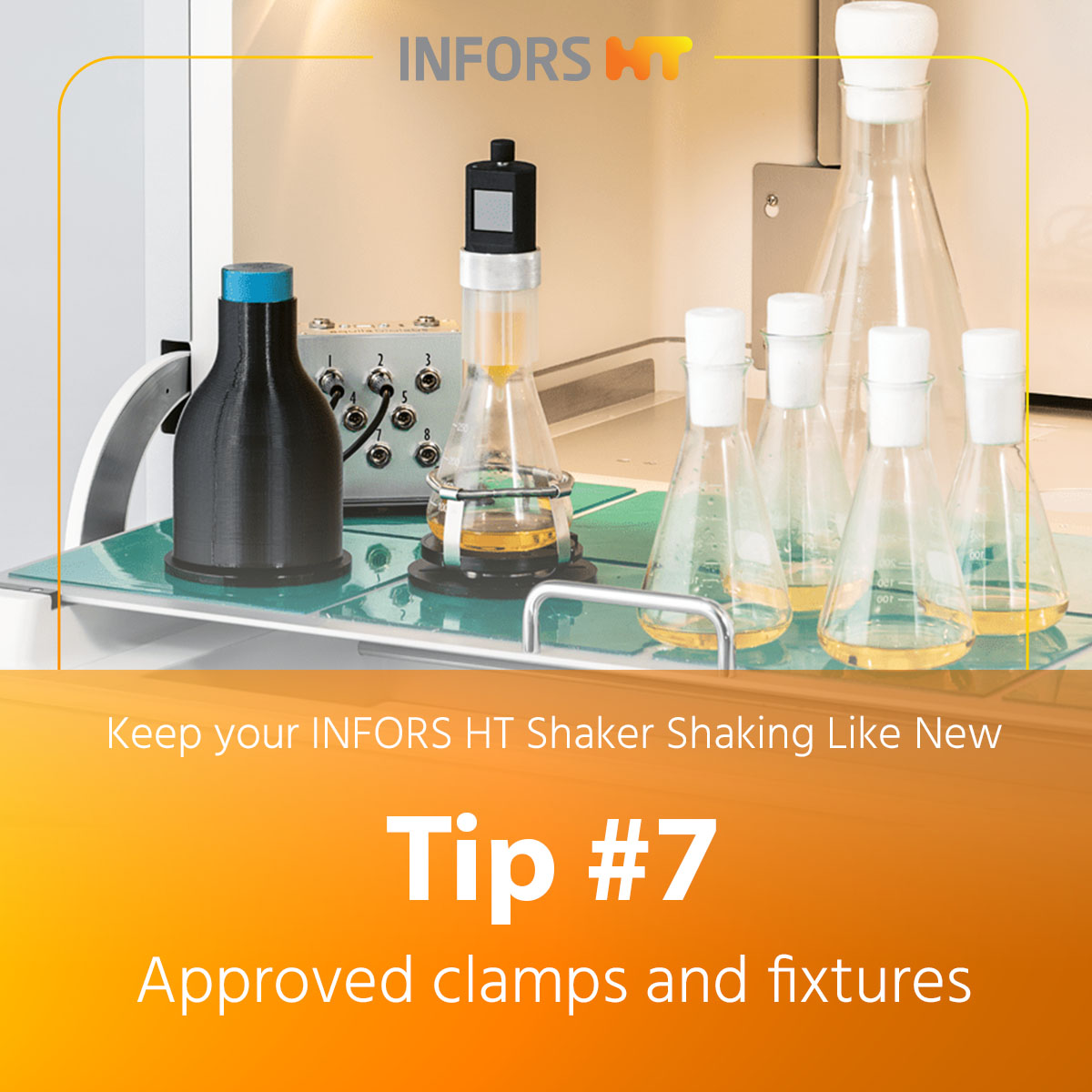
Use only INFORS HT-approved flask clamps and fixtures in an INFORS HT shaker. Approved clamps and fixtures are designed and tested to meet safety standards and specifications. Using non-approved or makeshift clamps can result in equipment failure, posing safety risks to laboratory personnel, samples and the shaker itself. Clamp and tube rack hole patterns vary by manufacturer, and using the wrong fixtures can result in permanent damage to the tray.
Using approved clamps and fixtures ensures compatibility with the shaker’s design making sure there is no mechanical stress, imbalance or unnecessary wear and tear. Approved fixtures are designed to securely hold samples and containers in place during shaking conditions at high rotation speed. Avoid spillages, breakages or damages potentially resulting in loss of valuable samples and product by using our approved fixtures.
Tip #8: Calibrate
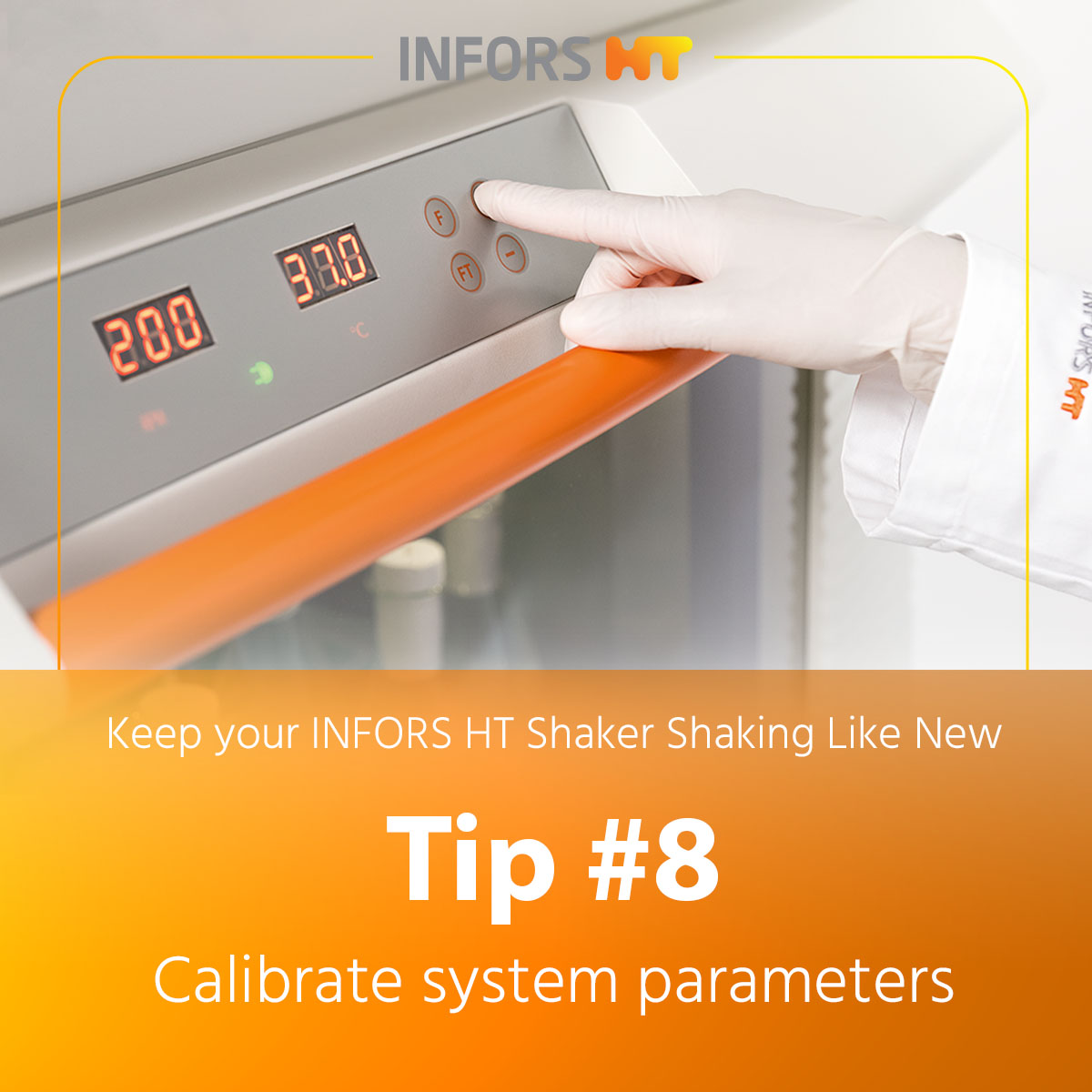
Calibration ensures that the shaker operates with the highest degree of accuracy and precision. It verifies that the shaker’s settings, such as speed, temperature, or CO2 levels, correspond to the actual conditions inside the chamber. This accuracy is crucial for reliable and reproducible experimental results.
Calibrating the shaker helps achieve consistent and reproducible results across different applications and over time. It ensures that your operations are not affected by equipment-related variables.
Make sure to calibrate system parameters such as temperature, CO2 and humidification on an annual basis. This can be done by the end-user after appropriate training or by INFORS HT directly. Accurate calibration is important for proper operation and experimentation.
Tip #9: Preventive Maintenance Visit
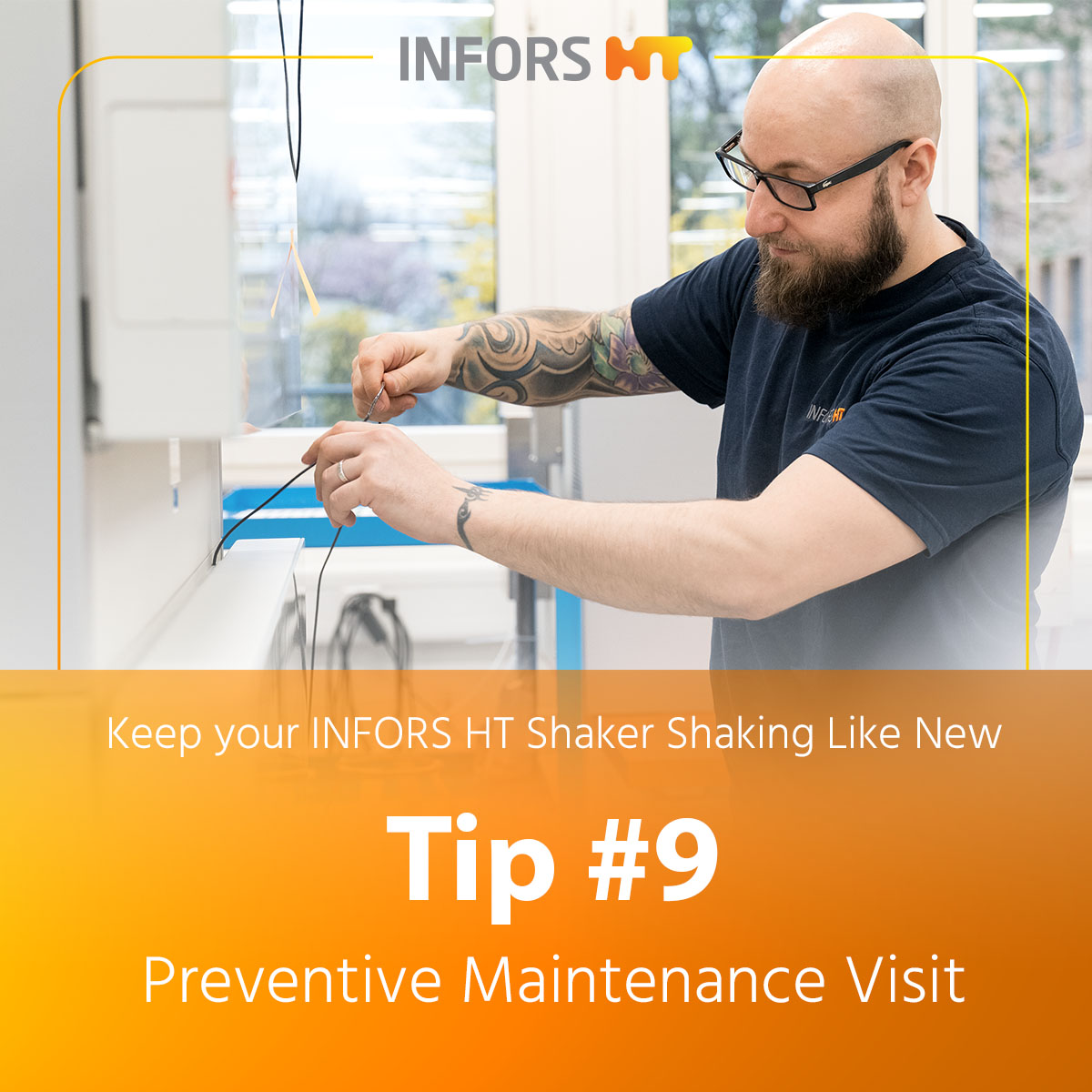
Regular maintenance ensures that your incubation shaker operates at its optimal performance level. Technicians can identify and address issues before they escalate, ensuring that the shaker functions reliably and consistently.
Maintaining the shaker’s accuracy and reliability through preventive maintenance helps preserve the integrity of your operations. A well-maintained shaker reduces the likelihood of errors or variations due to equipment-related factors. Regular maintenance can extend the lifespan of your incubation shaker. Addressing minor issues early prevents them from developing into major problems that might require costly repairs or replacement.
Have a qualified INFORS HT Field Service Engineer perform a preventive maintenance visit. This includes light cleaning, firmware updates and the check and change of all wear components.
Tip #10: Annual Full-Service Contract

Go one step further and obtain an annual service contract. While INFORS HT incubation shakers are robust and designed for 24/7 operation, it is an industry best practice to perform regular health checks of vital systems to mitigate risks of minor issues potentially causing delays in your important projects. INFORS HT will conduct an annual preventive maintenance visit and cover the cost of repairs for the agreement’s duration.
Full-service contracts include scheduled preventive maintenance visits as well as annual calibration of critical parameters. If any components or parts need repair or replacement during the service visit, a full-service contract typically covers these costs. This means that you won’t have to worry about unexpected expenses related to equipment breakdowns.
The full-service contract also comes with high priority ensuring your shaker receives prompt attention if issues arise. Faster response times minimize downtime and help you maintain productivity in your laboratory or industrial processes.
In addition to these service tips, you can rely on INFORS HT Field Service Engineers to ensure optimal performance of your incubation shakers by looking deeper than routine maintenance to identify any potential future risks.
Reach out today to discuss additional preventive maintenance and annual full-service contracts for your incubation shakers.



